Copyright 2020 - 2021 irantour.tours all right reserved
Designed by Behsazanhost
The Most Famous Iran's Churches
The Most Famous Iran's Churches
Exploring the Heart of Eastern Christianity
There are numerous Christian churches In Iran, each telling a part of Iran’s rich and ancient history. These religious monuments in Iran are among the most important symbols of the long-standing presence of Christians in the region. The existence of these significant UNESCO recorded monuments clearly demonstrates the deep-rooted presence of Christianity in Iran and reflects the peaceful coexistence of different religions throughout the centuries. These churches are not only very old but also hold great importance and special status among Christians around the world, attracting tourists, researchers, and Christian pilgrims from across the globe every year.
Christianity has a long and rich history in Iran, dating back to the earliest centuries. The Christians of Iran are among the Eastern Christians—those rooted in the eastern territories of Jerusalem. Iranian Christians have played a vital role in the history of Christian missions, shaping both spiritual life and cultural identity across the region. In 766, when Baghdad became the capital of the Islamic state, Iran became a major center of Christianity in the East. It served as a key hub for missionary activity, sending Christian representatives to surrounding countries. These efforts placed Iran at the forefront of early Christian expansion in Asia.
Today, there are various famous Christian churches in Iran that reflect this deep-rooted legacy. These sacred sites are not only places of worship but also architectural and historical landmarks. Among the top famous Iranian churches is the Monastery of Saint Thaddeus (Qara Kelisa)—a UNESCO-listed monument and one of the oldest Christian sites in the country. In East Azerbaijan, the Saint Stepanos Monastery stands as a prime example of Armenian Christian architecture. In Isfahan, the beautiful Vank Cathedral (Holy Savior Cathedral) blends Armenian artistry with Persian design. Meanwhile, in Tehran, the Saint Sarkis Cathedral represents the enduring presence of Armenian Christians in the capital.
These are just a few examples of the most famous Christian churches in Iran. From the mountain valleys of the northwest to the historic cities of central Iran, Iranian churches are among the most famous and important ones in the world. They continue to preserve centuries of faith, art, and cultural tradition. Whether you're drawn by history, architecture, or spiritual discovery, there are some of the most famous Christian churches all over Iran to encourage and mesmerize you.
The Most Famous Iran Churches are:
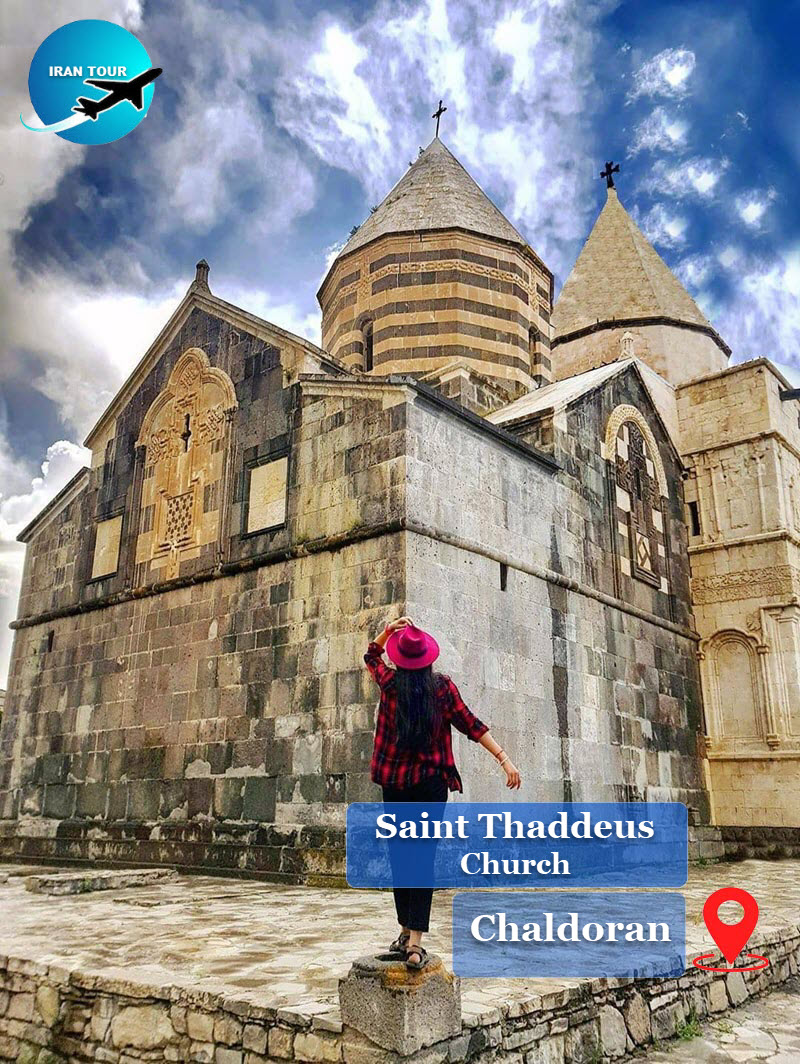 |
Monastery of Saint Thaddeus: An Ancient Armenian Treasure in Iran
The Monastery of Saint Thaddeus, also known as the Holy Tadeosi Cathedral and famously called the Black Church in Iran, is one of the most remarkable and ancient Christian monuments in Iran. This Armenian monastery, often believed to be among the oldest church buildings in the world, holds a significant place in the history of Orthodox Churches in Iran.
Located in West Azerbaijan Province, the Monastery of Saint Thaddeus (Qara Kelisa) is a key site for Iran sightseeing and religious pilgrimage. The monastery's rich history and unique architecture make it a standout among other monasteries in Iran and Christian heritage sites. In recognition of its outstanding cultural and historical value, the St. Thaddeus Monastery was inscribed on the UNESCO World Heritage list in 2020, cementing its status as a treasured Iran Christian monument.
Visitors to this ancient monastery can witness centuries-old religious traditions, stunning stone architecture, and the spiritual atmosphere that continues to attract tourists and faithful from around the world.
Every year, the Monastery of Saint Thaddeus, also known as the Holy Tadeosi Cathedral or Qara Kelisa, hosts a significant three-day religious pilgrimage, attracting thousands of devoted pilgrims from across Iran and beyond. Located in West Azerbaijan Province, this ancient Armenian monastery honors two revered saints buried within its grounds: Saint Thaddeus, one of the earliest apostles to spread Christianity, and Saint Theotokos, recognized as the first female Christian martyr.
The pilgrimage features special religious ceremonies including prayer, fasting, and communion, culminating in a powerful Eucharistic celebration that deeply resonates with attendees. Architecturally, the Monastery of Saint Thaddeus follows a large rectangular cruciform layout, crowned by a striking conical dome sitting atop a sixteen-sided drum with eight windows that allow natural light to illuminate the serene interior.
The monastery’s exterior and interior are richly decorated with intricate statues, reliefs, and sculptures illustrating biblical stories, saints, angels, and mythical figures. These artistic elements enhance the Monastery of Saint Thaddeus’ aesthetic beauty and vividly convey key aspects of Christian faith and Armenian heritage.
This unique blend of profound religious significance and remarkable architectural design makes the Monastery of Saint Thaddeus one of the most important Christian monuments in Iran and a must-visit destination among historic Orthodox churches in Iran. Whether you are a pilgrim or a traveler interested in religious history, the Monastery offers an unforgettable spiritual and cultural experience.
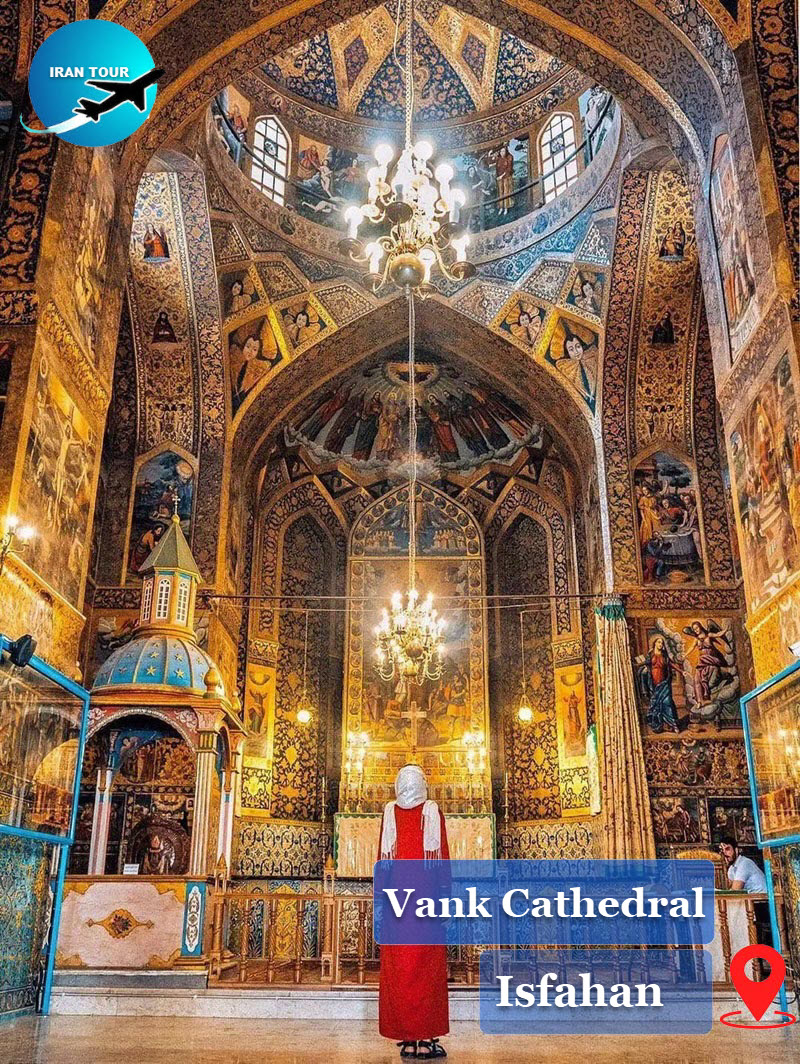 |
Vank Cathedral – The Most Spectacular Armenian Church in Isfahan, Iran
Hidden in the heart of Isfahan’s historic Jolfa district lies a dazzling architectural gem that continues to captivate visitors from around the world — Vank Cathedral- Orthodox church, also known as the Holy Savior or All Saviors' Church. Revered as the most spectacular church in Iran, this extraordinary site is not only the most famous Christian church in Isfahan, but also recognized as Iran’s most iconic church globally. Locally and internationally, the Vank Cathedral in Isfahan is also affectionately known by its Armenian name: Amna Perkich.
A Fusion of Cultures
What makes Vank Cathedral truly unforgettable is its stunning fusion of Iranian and Armenian architecture. Built during the reign of Shah Abbas the Great, this masterpiece was commissioned to serve as a spiritual and cultural center for Armenian immigrants who had been resettled in Isfahan in the 17th century. As such, the church stands not only as a place of worship but also as a symbol of religious coexistence and artistic collaboration.
Architectural Brilliance
The most defining feature of the cathedral is its conical dome, a hallmark of traditional Iranian architecture, cleverly incorporated into the structure of this Orthodox church. This architectural detail alone sets the church apart, blending the distinctive forms of Armenian ecclesiastical design with Persian structural aesthetics.
Once inside, visitors are mesmerized by the grandeur and intricacy of its interior decorations. The walls and ceilings are adorned with magnificent frescoes, stucco work, gilded motifs, and vivid oil paintings, illustrating biblical stories. These decorative arts, masterfully executed, reflect both Armenian religious themes and Persian artistic traditions, offering a visual feast that lingers in the memory.
A Highlight of Every Isfahan Tour
It’s no wonder that Vank Church is the highlight of Isfahan tour programs. Tourists, pilgrims, and art lovers alike flock to this remarkable sanctuary to experience its serene beauty and absorb the rich cultural heritage it represents. Whether you're captivated by history, architecture, or art, the Vank Cathedral promises an unforgettable journey through time and tradition.
A Living Testament
Today, Vank Cathedral stands not just as a relic of the past but as a living testament to the Armenian community in Iran and the enduring power of cross-cultural collaboration. A must-see for anyone exploring the wonders of Isfahan. If you should visit just one church in Iran, let it be the Vank Cathedral, the most iconic Armenian church in the Jolfa district, where every brick, brushstroke, and canvas tells a story that spans centuries.
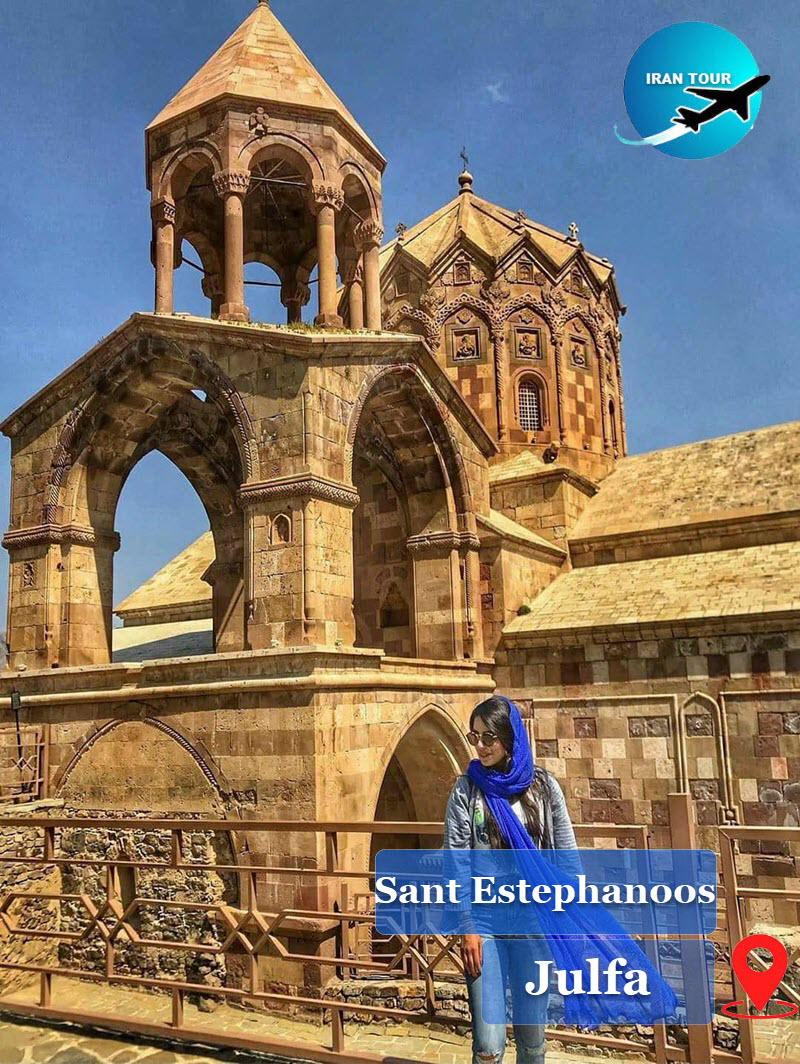 |
St. Stephen's Church – A Hidden Treasure of Armenian Christianity in Iran
Nestled in the majestic mountains of northwestern Iran lies one of the country’s most awe-inspiring religious landmarks and one of the 10 most famous Iranian churches by the name St. Stephen’s Church, also known as the Saint Stepanos Monastery. Located just 15 km northwest of Jolfa in East Azarbaijan Province, this medieval monastery stands as a powerful symbol of Armenian Christian heritage and spiritual resilience.
The Second Most Important Armenian Church in Iran
After the renowned Qara Church (St. Thaddeus Monastery), St. Stephen’s Church is recognized as the second most important church of Armenians in Iran. It holds immense religious and historical significance for the Armenian Apostolic Church and remains one of the most cherished Christian sites in Iran.
A UNESCO World Heritage Site
In 2008, Saint Stepanos Monastery was officially recognized as a UNESCO World Heritage Site, a testament to its global cultural and architectural importance. This sacred monument is not just a place of worship—it is a living relic of centuries-old Armenian spiritual traditions, dating back as far as the 9th century.
A Testament to the Christian Roots of Iran
Dedicated to Saint Stepanos, the first Christian martyr, this impressive old building has played a pivotal role in the religious life of the Armenian community in Iran. During times of political unrest, the monastery served as both a spiritual center and a safe refuge for persecuted Christians. Its existence reflects the deep Christian roots in Iranian culture, particularly in the Julfa region.
Architectural Brilliance: A Blend of Armenian and Persian Art
What makes St. Stephen’s Church so unique is its remarkable architectural blend. The complex features classic Christian elements such as a cylindrical bell tower, a central dome, and a crown of crosses—hallmarks of Armenian religious architecture. Yet, it also integrates exquisite Persian art through stone carvings, intricate wall decorations, and rich ornamentation. These features illustrate the cultural interchanges between Armenian, Persian, Byzantine, and Orthodox styles, making the site a masterpiece of regional religious art.
Why You Should Visit
For travelers passionate about religious tourism, Christian heritage, or ancient architecture, St. Stephen’s Monastery in Jolfa is an unforgettable destination. Its peaceful mountainous setting, combined with centuries of sacred history and exquisite Armenian-Persian architecture, offers a deeply spiritual and visually stunning experience.
While Iran may not be widely known for Christian pilgrimage, landmarks like St. Stephen’s Church, Qara Church, and Vank Cathedral in Isfahan reveal a hidden world of cultural richness and religious harmony.
Explore Iran’s Christian Heritage on a 3-day Tabriz Tour or immerse yourself fully in a 14-day Iranian Churches Tour, taking you through the best-preserved churches in western Iran. Plan your visit now and uncover the Christian treasures of Iran.
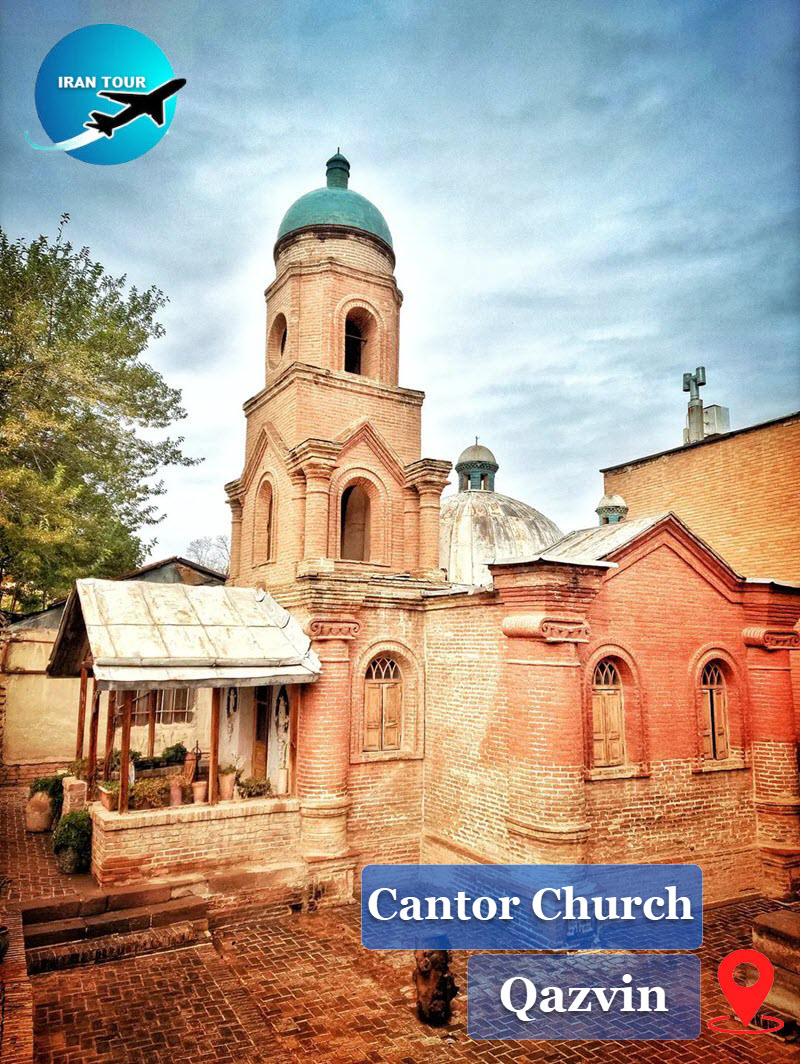 |
Discover Cantor Church: A Hidden Gem in Qazvin, One of Iran’s Most Beautiful Historical Cities
Just 150 kilometers from Tehran lies the city of Qazvin, the second capital of the Safavid Dynasty and one of the most fascinating historical cities in Iran. Rich in architecture, culture, and heritage, Qazvin is an exciting destination filled with the most beautiful historical monuments—and among them stands the stunning Cantor Church, also known as the Bell Tower.
Built by Russian architects during the Qajar period, this elegant church was constructed during World War II, when Iran was partially occupied by Russian forces. The name "Cantor" comes from the Russian word for "headquarters," reflecting its original purpose. Despite the absence of an Orthodox Christian community in the city today, this beautifully preserved structure remains a proud symbol of Qazvin’s multicultural past.
Cantor Church is considered one of the 10 most famous churches in Iran, and for good reason. Its striking red-brick façade, intricate design, and unique blend of Eastern Orthodox and Russian architecture make it a must-see landmark. Often called the Red Church, its elegant dome, bell tower, and symmetrical brickwork create a luxurious appearance that attracts tourists, architecture lovers, and history enthusiasts alike.
Qazvin itself is one of the most beautiful tourist destinations near Tehran, making it an ideal day trip or weekend getaway. Whether you're drawn by Iran’s rich Safavid heritage, its majestic monuments, or simply seeking a peaceful escape filled with history and culture, Cantor Church in Qazvin is a place that should not be missed.
Architecture of Kantor Church
Kantor Church is a fine example of Eastern Orthodox ecclesiastical architecture, blending traditional Christian design elements with regional construction techniques. The building features a compact cruciform layout, reflecting the symbolic structure commonly seen in Orthodox churches. Its architectural composition includes domes, an altar-oriented eastward, and a prominent bell tower that rises above the entrance—emphasizing verticality and spiritual ascent.
Crafted primarily from brick and mortar, the church showcases intricate brickwork that enhances its aesthetic appeal. The exterior is adorned with subtle decorative features, including columns and religious symbols, which underscore its sacred function. The spatial arrangement within includes a central prayer hall, flanked by auxiliary rooms, and a semicircular altar area topped with a dome, contributing to the spiritual ambiance of the space.
Kantor Church's design not only fulfills liturgical purposes but also embodies the cultural and historical presence of the Orthodox Christian community in Iran. Its architectural character, though modest in scale, leaves a lasting impression through harmony, symbolism, and craftsmanship.
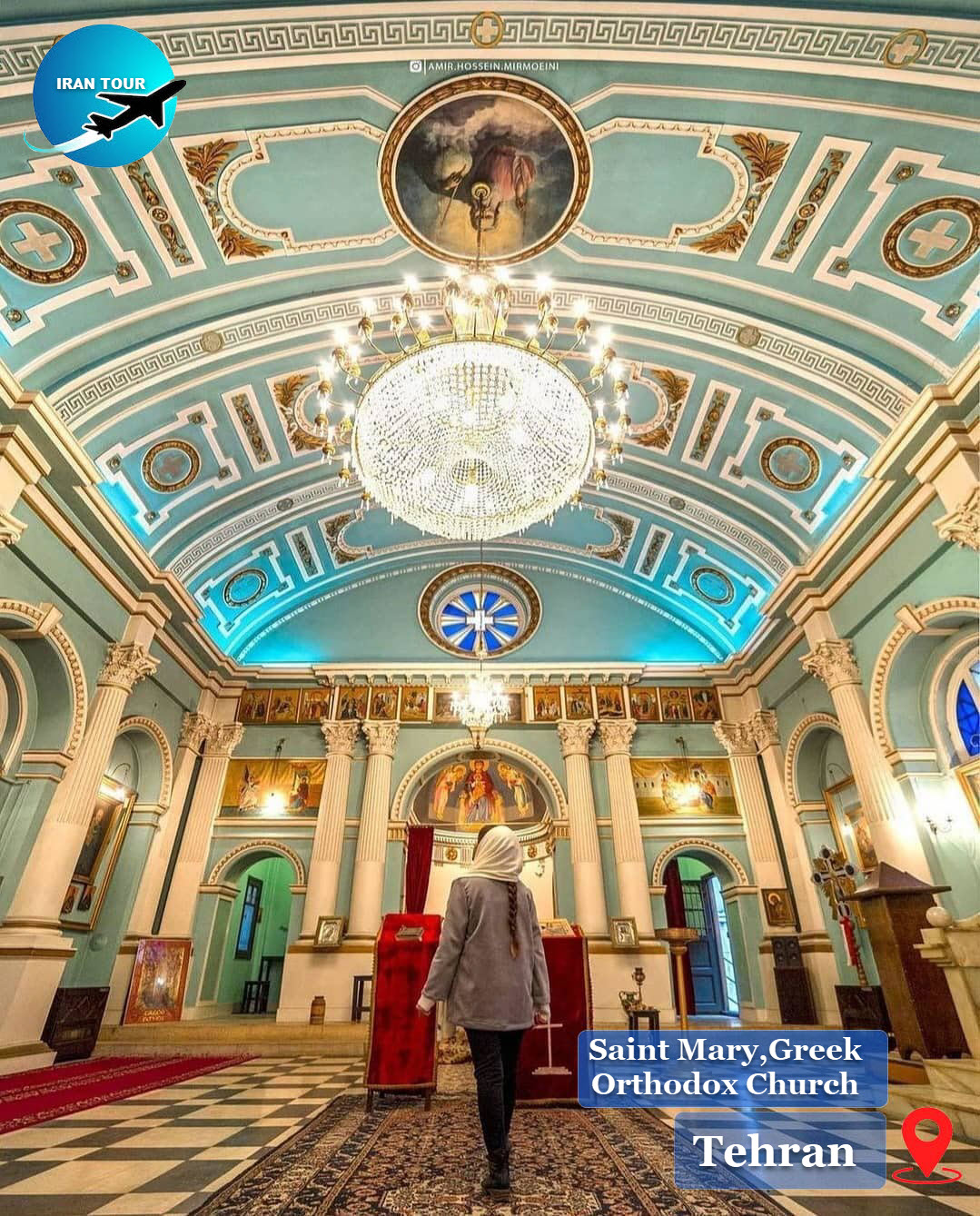 |
Discover the Greek Orthodox Church of Tehran: The Little Vatican in the Heart of Greater Tehran
If you’re looking to explore the most beautiful churches in Iran, don’t miss the majestic Greek Orthodox Church in Tehran—often referred to as the "Little Vatican". Located right across from the former US Embassy in Tehran, this remarkable church stands as a symbol of Greek culture, history, and Orthodoxy in the heart of Iran's capital.
A Glimpse History of the Greek Orthodox Church in Tehran
The Greek Orthodox Church is one of the top 10 beautiful churches in Iran, built for the Greek Orthodox community living in Tehran during the early 20th century. Situated next to the Greek Embassy, had been hosted Greek immigrants to Iran for their religious ceremonies.
Orthodoxy—translated from Greek as religious righteousness—has deep theological roots. The church's origins are tied to the schism between Eastern (Byzantine) and Western (Roman) Christianity, when followers of Eastern Orthodoxy broke away from Western Rome. Many of these believers spread throughout the world, including Iran, bringing their faith and culture with them.
Though many Greek Orthodox followers have emigrated from Iran in recent decades, the church remains an important spiritual and historical site. While few religious ceremonies are held today, the Greek Orthodox Church of Tehran continues to be a proud architectural and cultural landmark.
Greek Orthodox Church Architecture
The architecture of the Greek Orthodox Church in Tehran is both stunning and symbolic. Built in the classic Greek temple style, the structure resembles iconic sites like the Parthenon in Athens. Its half-columns, symmetrical stairs, and harmonious proportions offer a powerful nod to ancient Greek design principles.
Inside the church, visitors are captivated by magnificent paintings of Christ, done in the rich Byzantine tradition. Interestingly, unlike many Western churches, there are no depictions of a crucified or suffering Christ. This reflects a key theological distinction between Eastern Orthodox Christianity and Western traditions: the Eastern Church emphasizes divine glory and resurrection over suffering and sacrifice.
From the ornate domes to the peaceful prayer hall, every detail of the church reflects the spiritual grace and artistic sophistication of the Greek Orthodox faith.
Why Visit the Greek Orthodox Church in Tehran?
-It is one of the 10 most beautiful and historic churches in Iran
-Known as the "Little Vatican" of Tehran
-A stunning example of Greek Orthodox architecture
-A rare cultural remnant of the Greek community in Iran
-Located in a historically significant area near the former US Embassy
Plan Your Visit
Whether you're a lover of religious architecture, a history enthusiast, or simply exploring Christian churches in Iran, the Greek Orthodox Church of Tehran is a must-visit. This hidden gem offers a unique blend of Greek tradition, spiritual elegance, and Tehran's multicultural heritage—all in one unforgettable experience.
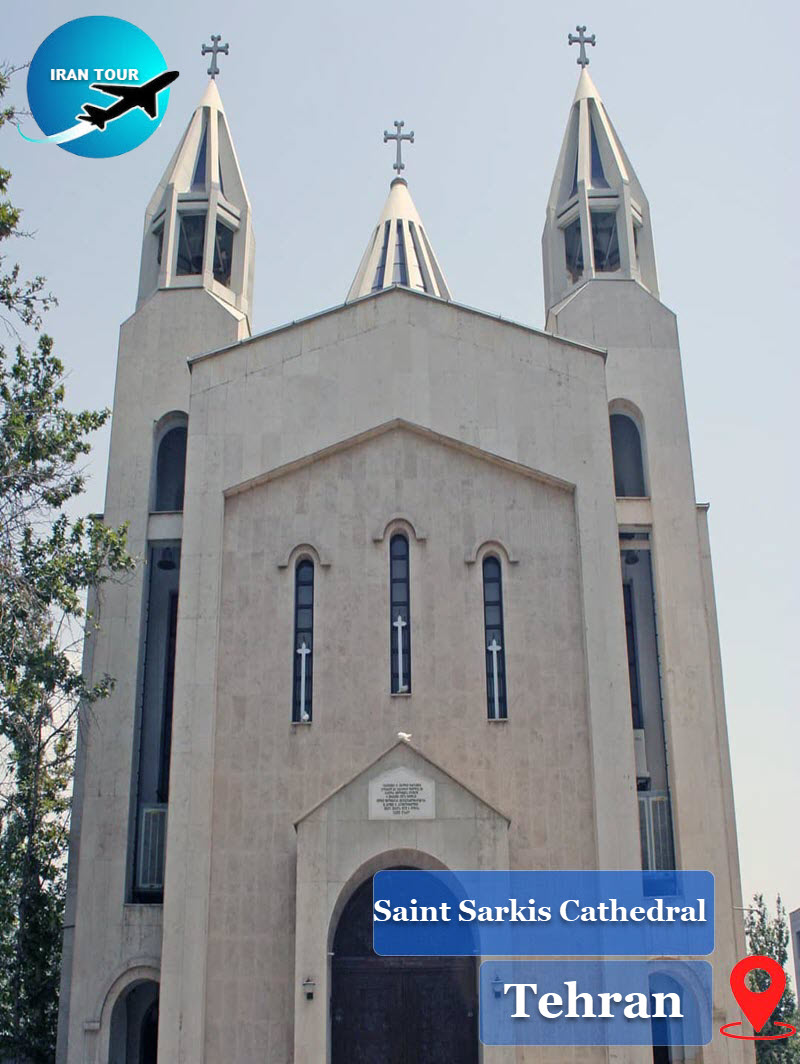 |
Saint Sarkis Cathedral
one of the three main Armenian dioceses in Tehran is located at Saint Sarkis Cathedral. This historical monument with its white building, a conical dome, and raised Minarets is the hangout of Tehran's Armenians. This Cathedral which is one of the main symbols of Armenian presence in Tehran is built-in 1970 with a combination of Middle Ages and modern age architectures. The building of caliphate council was also built in the external area of the cathedral. The grave of an archbishop, Artak Manukean, is the only tomb in the courtyard of the cathedral. The entrance gate of the church includes a main larger gate in the middle and two small doors on its sides. The main hall is decorated with fantastic paintings of the Gospel stories, the altar with a floor upper than the ground level is full of paintings related to the stories of the holy book, and has a balcony for choir performances. Today the Armenians gather here to hold their religious ceremonies.
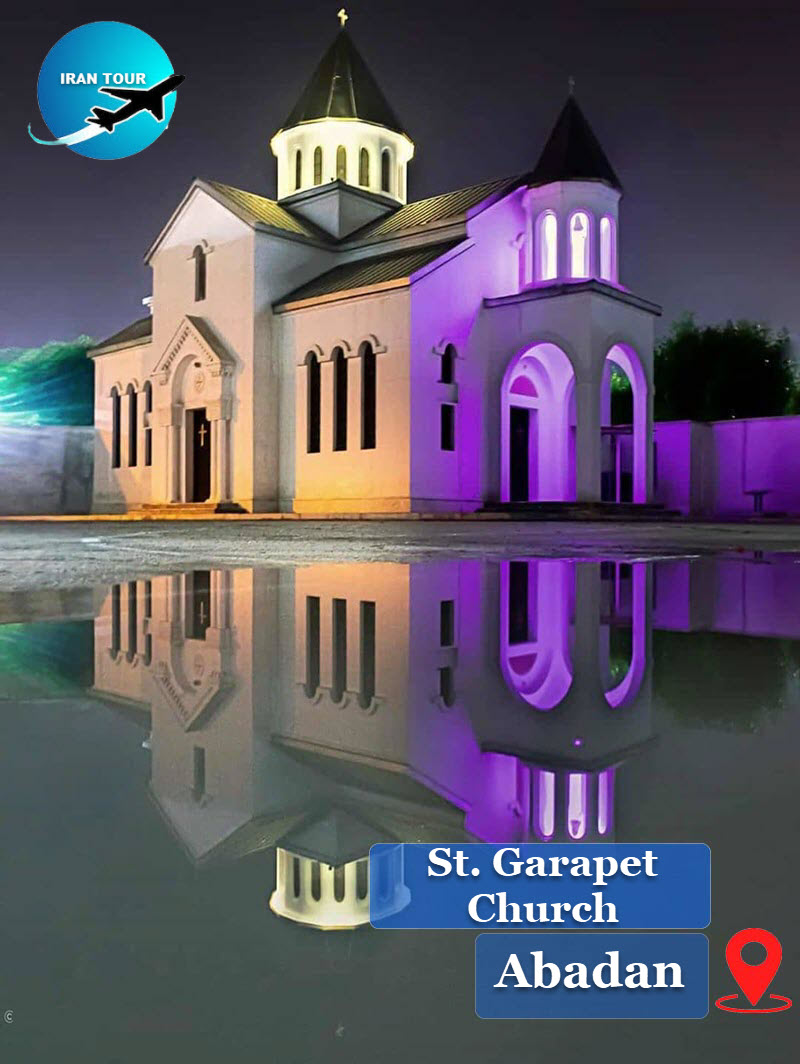 |
Surt Garapet Church
One of the most important of Iran's cultural features is the peaceful coexistence of different religions. This church is adjacent to one of the mosques in Abadan and it is the most important sign of religions' coexistence. This church, along with two other churches that were destroyed during the Iran-Iraq War, was the most important Christian building in the city. The Armenian Church of Surp Karapet was founded in 1957 in Abadan, during the reign of Pahlavi. This Gregorian church was once close to two Protestant churches, the Christopher Church, founded in 1928, and the Assyrian Church, founded in 1951, neither of which is preserved today. Together they constituted the triple churches of Abadan.
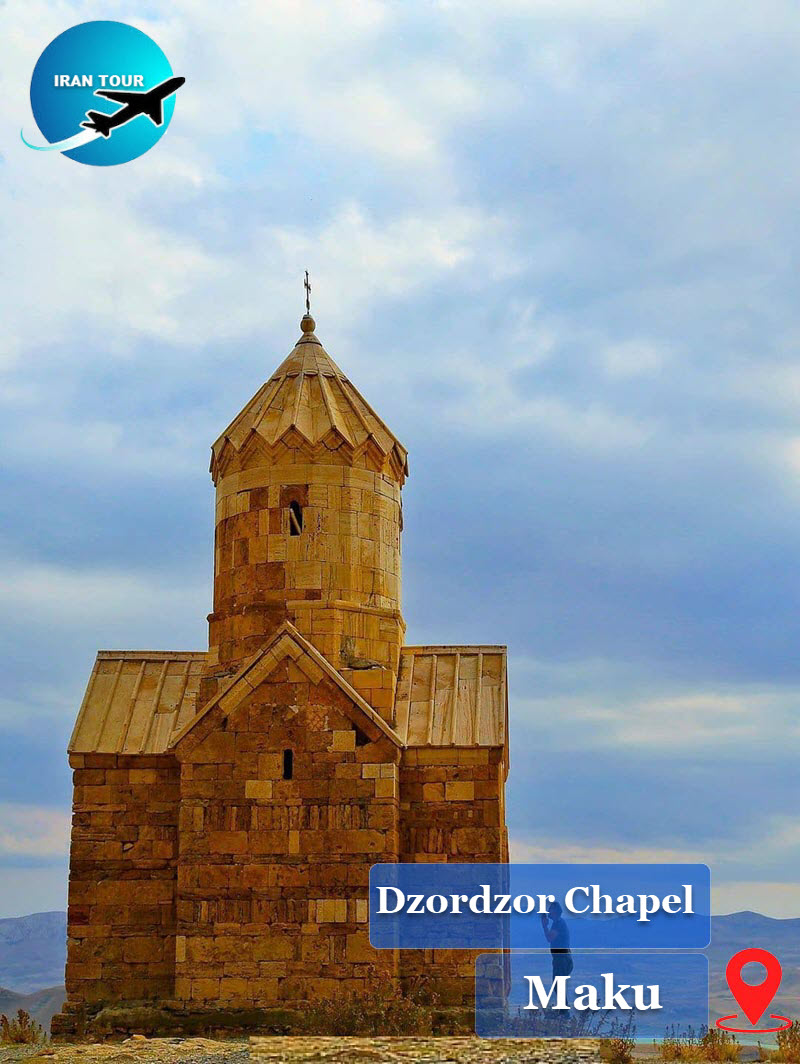 |
Dzordzor Chapel
St. Mary's Church or Dzordzor Chapel is located in Mako County, West Azerbaijan Province, 12 km northwest of St. Thaddeus Monastery (Qarah Church), near the village of Barun. This church is one of the Historical Monuments of Iran, which is also inscribed on the List of National Monuments of Iran and on the UNESCO World Heritage List. In 1988, due to the flooding of Baron Dam, the church was moved to a higher point, 600 meters from the main site. From the cruelty of Shah Abbas I to expelling Armenians from this region, the relocation of the reservoir behind the dam, and the re-transfer to the hill, are the ups and downs this historic little church has faced. The date of construction of Zor Zor is estimated between 1315-1342 AD and was built by the Archbishop of the Church of St. Thaddeus, named "Zakaria" of the great family and owners of the area, and as a religious school, cultural and literary education, under the supervision of It was headed by Bishop Hovhannes Yerznaghatsi (Yerzengatsi), one of the most famous Armenians of literature and education.
- Details
- Category: What to see in IRAN